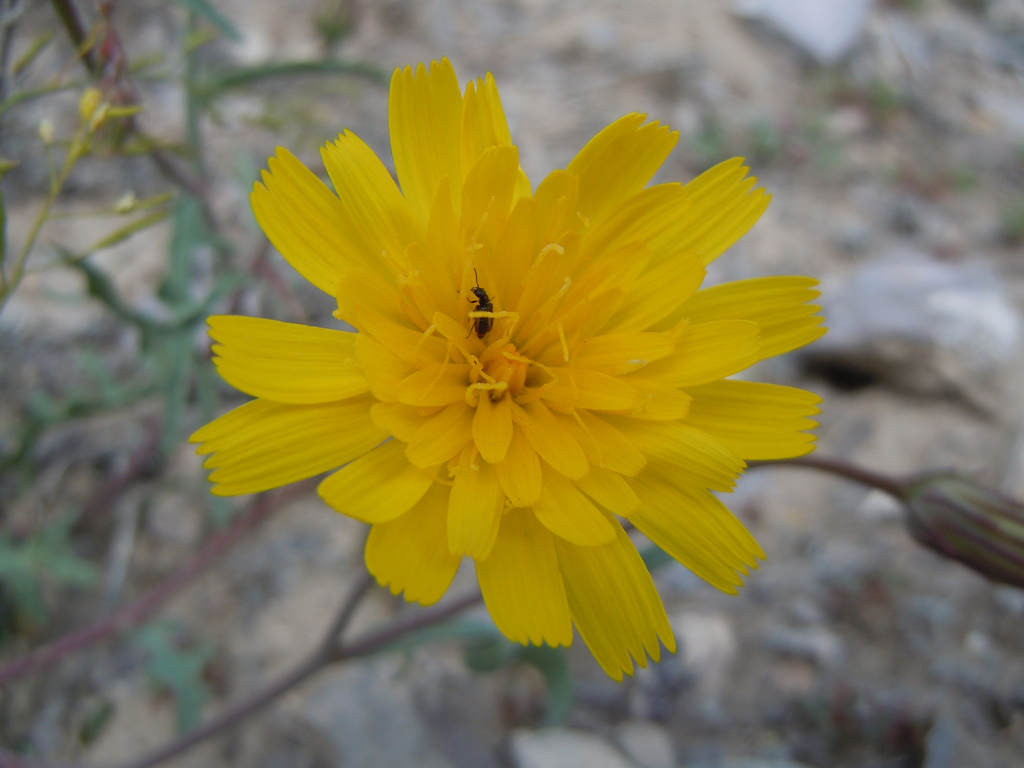Malacothrix
|
Family: Asteraceae |
Annuals or perennials, 2-70(-200) cm; taprooted (rhizomatous or taproots becoming caudices in M. saxatilis). Stems 1-15 (usually from basal rosettes), usually erect, sometimes ± prostrate, usually branched (scapiform in M. californica), usually glabrous (sometimes piloso-hirsute, stipitate-glandular, or tomentose to arachnose or puberulent, at least proximally or in leaf axils). Leaves usually basal and cauline; sessile; blades mostly oblong or lanceolate to obovate, oblanceolate, or spatulate (often pinnately lobed), ultimate margins entire or ± dentate (faces usually glabrous, sometimes piloso-hirsute or tomentose to arachnose or puberulent). Heads usually in corymbiform to paniculiform arrays (borne singly in M. californica). Peduncles not inflated distally, usually bracteate. Calyculi 0 (outer phyllaries intergrading with inner) or of 3-30+, ± deltate or lanceolate to linear or subulate, subequal to unequal bractlets (in 1-2 series distinct from phyllaries, margins usually hyaline, faces usually glabrous, sometimes arachnose, rarely stipitate-glandular). Involucres usually broadly to narrowly campanulate, sometimes hemispheric, (5-22+ ×) 2-22+ mm diam. Phyllaries either (without calyculi) 25-80+ in 4-6+ series and orbiculate to oblong, lance-oblong, lanceolate, or linear, unequal, or (with calyculi) 12-25+ in 2-3 series and oblong or lanceolate to linear, subequal; margins ± hyaline, 0.05-2.5 mm, apices obtuse to acute or acuminate. Receptacles flat to ± convex, pitted or smooth, sometimes bristly, epaleate. Florets 15-270; corollas yellow or white (sometimes reddish or lavender abaxially; outer ligules exserted 1-15 mm). Cypselae (monomorphic) stramineous to brown or purplish brown, ± prismatic or cylindro-fusiform, not beaked, ribs 15 (often 5 more prominent than others, apices of ribs sometimes projecting and forming coronas subtending pappi), usually glabrous (sometimes minutely hirtellous or muriculate); pappi 0, or (single or double) persistent, whitish, crenate crowns or rings of (1-)8-25+ teeth (mostly 0.05-0.1 mm) plus 0-6, coarse, smooth bristles (setiform scales), all in ± 1 series, subtending (i.e., exterior to) the readily falling, inner (or single and only) pappi of 15-35, basally coherent, white, fine, smooth to barbellulate or (proximally) ± plumose bristles in 1 series (falling all together or in groups). x = 7, 9. |

